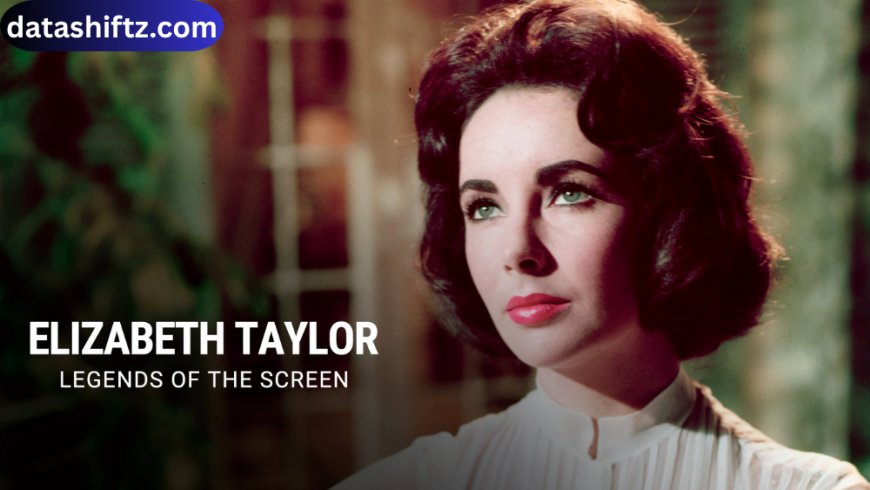Elizabeth Taylor: The Life, Legacy, and Timeless Icon

Introduction
Elizabeth Taylor, often hailed as one of Hollywood’s most iconic actresses, remains a symbol of beauty, talent, and resilience. Born on February 27, 1932, in London, England, Taylor’s career spanned more than six decades, encompassing legendary film performances, philanthropic efforts, and a high-profile personal life that captivated the public. Her stunning violet eyes, magnetic screen presence, and commitment to her craft solidified her status as a cinematic legend.
This article explores Elizabeth Taylor’s life, career, achievements, and enduring legacy. It includes a table form summarizing her major works and accolades and a list form highlighting key lessons from her life.
Early Life and Career Beginnings
Elizabeth Rosemond Taylor was born to American parents living in London. Her family moved back to Los Angeles in 1939, where she was exposed to the burgeoning film industry.
-
Child Star – Taylor made her film debut at age 10 in There’s One Born Every Minute (1942), showcasing early talent and poise.
-
Breakthrough – Her role in National Velvet (1944) at age 12 catapulted her to fame, earning critical acclaim and public adoration.
-
Hollywood Contract – By her teens, Taylor was under contract with MGM Studios, appearing in a variety of films that honed her acting skills.
Her early experiences in Hollywood laid the foundation for her remarkable career, teaching her professionalism, adaptability, and resilience in a competitive industry.
Film Career and Iconic Roles
Elizabeth Taylor’s film career is distinguished by versatility, emotional depth, and unforgettable performances. She worked with some of the greatest directors and actors of her time, leaving an indelible mark on cinematic history.
Major Film Highlights
| Film Title | Year | Role/Impact |
|---|---|---|
| National Velvet | 1944 | Young horse-riding prodigy, breakout performance |
| A Place in the Sun | 1951 | Dramatic adult role showcasing range |
| Giant | 1956 | Epic drama alongside James Dean and Rock Hudson |
| Cat on a Hot Tin Roof | 1958 | Intense portrayal of complex emotions |
| Cleopatra | 1963 | Legendary role; one of the most expensive films |
| Who’s Afraid of Virginia Woolf | 1966 | Academy Award-winning performance |
| Butterfield 8 | 1960 | Academy Award-winning performance |
Taylor’s ability to immerse herself in diverse roles—from youthful innocence to mature, complex characters—earned her critical acclaim and a dedicated fan following worldwide.
Personal Life and Public Image
Elizabeth Taylor’s personal life often captured as much attention as her professional achievements. She was married eight times to seven men, including Hollywood icons Richard Burton (twice), which fueled media fascination.
-
Relationships – Taylor’s marriages and romances were highly publicized, reflecting both the glamour and pressures of Hollywood life.
-
Health Challenges – She faced numerous health issues throughout her life, including lifelong battles with arthritis, back problems, and other ailments, demonstrating resilience and determination.
-
Philanthropy – Beyond acting, Taylor became a pioneering advocate for HIV/AIDS awareness, founding the Elizabeth Taylor AIDS Foundation (ETAF) in 1991 and raising millions for research and support.
Her public image combined glamour, vulnerability, and activism, making her a multifaceted icon.
Awards and Recognition
Elizabeth Taylor received numerous awards and honors throughout her career, recognizing her talent and contributions to cinema and society.
| Award / Recognition | Year(s) / Details |
|---|---|
| Academy Awards | Won Best Actress for Butterfield 8 (1960) and Who’s Afraid of Virginia Woolf (1966) |
| Golden Globe Awards | Multiple nominations and wins for Best Actress |
| BAFTA Award | Nomination for Suddenly, Last Summer (1959) |
| AFI Life Achievement Award | Honored in 1993 for contributions to American cinema |
| Presidential Citizens Medal | Received in 2001 for philanthropic work |
These accolades highlight Taylor’s professional excellence and enduring impact on the arts.
Legacy and Cultural Impact
Elizabeth Taylor’s legacy extends far beyond her acting career. She redefined the image of a Hollywood star, blending glamour, talent, and advocacy.
Cultural Contributions
-
Hollywood Icon – Redefined beauty standards with her unique violet eyes and signature style.
-
Trailblazer for Women – Advocated for strong female roles in cinema.
-
Philanthropy – Set new standards for celebrity activism in health awareness.
-
Fashion Influence – Recognized as a style icon with timeless elegance.
-
Inspiration for Future Generations – Continues to inspire actors, activists, and artists worldwide.
Her life story has been chronicled in biographies, documentaries, and media retrospectives, ensuring that her legacy endures.
Lessons from Elizabeth Taylor
-
Resilience – Overcame personal, health, and professional challenges with determination.
-
Versatility – Excelled in diverse roles, showcasing adaptability and skill.
-
Authenticity – Maintained individuality despite public scrutiny.
-
Philanthropy – Used fame to support meaningful causes, including HIV/AIDS awareness.
-
Dedication to Craft – Demonstrated unwavering commitment to acting excellence.
-
Empowerment – Advocated for strong female roles in cinema.
-
Courage – Navigated public controversies with grace and confidence.
-
Legacy Building – Ensured her impact would transcend her lifetime.
-
Style and Glamour – Influenced fashion trends while staying true to herself.
-
Inspiration – Continues to inspire aspiring actors and philanthropists worldwide.
Conclusion
Elizabeth Taylor remains a timeless icon of Hollywood, admired for her extraordinary talent, beauty, and philanthropic spirit. From her early breakout roles in National Velvet to Academy Award-winning performances in Butterfield 8 and Who’s Afraid of Virginia Woolf, Taylor’s contributions to cinema are unparalleled.
Beyond the screen, her advocacy, resilience, and dedication to health causes created a lasting impact on society. Elizabeth Taylor’s life serves as a blueprint for artistry, courage, and compassion, leaving a legacy that continues to inspire generations.





























